Abstract
This research tried to compare the level of farmers’ livelihood vulnerability to flooding in Sukoharjo and Klaten. Farmers are the most susceptible caused by climate change. The data used in this research are primary data, collected by interviewing 61 respondents who are farmers in the Sonorejo Village, Sukoharjo Regency and 72 respondents in the Jiwo Wetan Village, Klaten Regency. This data obtained by using non-probability sampling technique with purposive methods. Meanwhile mapping for hazard level was analysed by using Geographic Information System (GIS). Descriptive statistic was used for the livelihood vulnerability index’s (LVI) and the LVI-Intergovernmental Panel on Climate Change’s (IPCC) index calculation. The results show that the farmers’ livelihood vulnerability in the Sonorejo Village is medium level because of climate change based on the LVI index value at 0.363 and LVI-IPCC index value at 0.044. Meanwhile, the Jiwo Wetan Village has a lower index in LVI at 0.344 and LVI-IPCC index value at 0.038. Areas with similar physical characteristic and most of its community have a dependence on agriculture tend relatively the same level of vulnerability.
Keywords: poverty; food security; livelihood vulnerability index; flood; climate change.
Introduction
The increase in emissions of greenhouse gases (GHG) leads to an increase in temperature of the earth and causes global climate change. This is one of the key elements in the system of metabolism and physiology of plants; the global climate change has a major impact on the agricultural sector. According to the Agricultural Research and Development Agency (BBSDLP 2011), the agricultural sector is one of the most threatened sectors that is suffering and vulnerable to climate change. Salinger (2005) and Karim, Jahan and Islam (2014) stated three main factors in the agricultural sector based on global climate change, that is, (1) changes in the patterns of rainfall, (2) the rise of extreme climate events (floods and droughts) and (3) an increase in air temperature.
An extreme climate change causes a great impact on the agricultural sector. The climate change severely leads to changes in pattern, and the level of precipitation affects the initial time of planting and growing period. The alteration in level of precipitation affects the time and seasons, cropping patterns, land degradation, destruction of crops and productivity, planted and harvested acreage, and the damage to biodiversity, especially crops that is relatively sensitive to water availability (Runtunuwu & Syahbuddin 2007). Flooding on rice fields causes a reduction in harvest area and a decline in rice production significantly. High rainfall causes losses to farmers in the United States. The US EPA (2015) reported losses in 2010–2011, which reached $220 million. Mall, Gupta and Sungkar (2017) said that farmers must be given guidance to adapt because climate change has a negative effect.
Central Java Province is the second largest province of East Java with total area of wetland that is prone to flood or inundation (Table 1). Even so, Central Java Province remains one of Indonesia’s largest rice suppliers. Sukoharjo sub-district is one of the regions that largest suppliers of rice and food buffer in Central Java. Rice is the main agricultural product in Sukoharjo sub-district. According to report from the Minister of Agriculture and the Central Bureau of Statistics in Sukoharjo 2015, rice production in the Sukoharjo sub-district ranks third after the Polokarto sub-district and Mojolaban sub-district. Sukoharjo sub-district consists of 14 villages, where most of the land is used as a wetland. The use of paddy fields in the sub-district of Sukoharjo in 2013 amounted to 2.363 hectares (ha) or 53% of the total area of its territory. Sonorejo is the largest area with land use for rice fields; proportion is reached to 68% (302 ha) of the total area (444 ha). However, at some point the fields contained in the Sonorejo Village is prone to floods. However, Klaten is also a producer of rice in Central Java. Rice production in Klaten reaches 350 000 tons per year, while local demand is only 207 500 tons per year. Unfortunately, some areas become prone to flood because of overflow of the Dengkeng River. One of the worst impacted areas is the Jiwo Wetan Village in Klaten Regency, where, in 2017, there was a crop failure of 35.2 ha which was suffered by 123 farmers.
Based on the results of the mapping with Geographic Information System (GIS) and interview conducted with the Head of Village and the Head of Sonorejo’s Farmers Group Association (Gapoktan), wetland that is mostly prone to flood is located in the eastern part of the Sonorejo Village, namely, Langsur and Ngiser, that is directly adjacent to the Bulakrejo and Sukoharjo Village. The land altitude in those areas is lower than the surrounding areas, and the water drains (drainage) are not functioning properly, resulting to the flooding in the field.
The research area in Klaten Regency also has characteristics similar to the sample area in Sukoharjo Regency. The altitude of the Jiwo Wetan Region is lower than other areas around it. When the Dengkeng River overflows, the overflow leads in the terrain in the south of the village. If the inundation does not pass, then the water goes to the rice fields and settlements of the Jiwo Wetan Village.
The majority of the population in the Sonorejo and Jiwo Wetan villages rely on agriculture, especially crops and paddy rice. This condition causes the vulnerability on the livelihoods of farmers and their households. This study aims to deepen the understanding of the vulnerability of people’s livelihoods in flood-prone areas in paddy field in the Sonorejo Village and Jiwo Wetan Village, which are based on the results of the mapping with GIS and livelihood vulnerability index (LVI). The benefit of this research is to find out whether areas that have the same level of hazard and the same dependence on agriculture will have the same level of vulnerability.
Methods and data analysis
Geographic Information System is used as a tool to find the area that is prone to flood. Thereafter, the analysis of the vulnerability of households’ farming based on flood occurrence will be conducted by using LVI calculations, which is based on the primary data obtained. Furthermore, the results are described as follows.
Analysis by Geographic Information System
The utilisation of GIS has been done to identify areas of potential disasters. Wood and Good (2004) identify vulnerability at airports and seaports as catastrophic earthquake and tsunami. Saptutyningsih and Suryanto (2011), measure the environmental and social impact caused by natural disasters (ND). This research used the GIS to map the flood-prone areas in the Sonorejo Village and Jiwo Wetan Village by taking some variables into account, such as flood event data, curvature of the river, slope and land use.
Livelihood vulnerability index approach
Vulnerability is one of the factors that determines whether people have risks to their livelihoods or not. According to IPPC (2007), the vulnerability assessment measures the ability of the community to respond to hazard and or secure their livelihood. Therefore, the index is used for comparison among the communities. Vulnerability Index or LVI was developed by Hahn, Riederer and Foster (2009), Madhuri, Thewari, and Bhowmick (2014), Simane, Zaitchik and Foltz (2016) and Richardson et al. (2018). This study wants to measure the vulnerability of households living in areas classified as flood-prone in Sukoharjo Regency and Klaten Regency. Most of the LVI studies were conducted to see differences in the level of vulnerability in different regional characteristics. Some examples of studies, Hahn et al. (2009) use LVI for coastal and inland populations, Simane et al. (2016) see differences in the characteristics of highland and lowland ecosystems and Richardson et al. (2018) further see LVI as a basis for predicting food security in a region. Nevertheless, the LVI calculations by Hahn et al. (2009) is applied in this study, which consists of the following seven main components:
- Socio-demographic profile (SDP)
- Livelihood strategies (LS)
- Health (H)
- Food (F)
- Water (W)
- Social networks (SN)
- Natural disasters (ND) and climate variability
According to Hahn et al. (2009), LVI component consists of several sub-components or indicators. These sub-components are developed based on a literature study of each major component. Table 2 shows how each of these sub-components is taken into account and limits the ability or potential bias.
| TABLE 2: Design of the livelihood vulnerability index. |
Each of these sub-components is calculated with different scales; therefore, an index is needed to calculate all the components as a whole. Accordingly, the composite index approach was used to convert the scale of each sub-component derived from The Life Expectancy Index (UNDP 2007), which is calculated as follows:
where, Sd is the value of the sub-components of the area d, and Smin and Smax indicate the minimum and maximum values of each sub-components that is determined by the data from the study area. Once standardised, the sub-components are averaged by using the following formula, and then calculate the value of its main components.
The value of Md is equal to one of the main components in the area d (SDP, LS, H, F, W, SN and ND). The di index reflects the value of the sub-components that are indexed by i. Based on these equations, the LVI grades can be obtained by using the following equation:
or
where, LVId represents the index value for the susceptibility in area, d, measured by seven major components. WMi represents the number of sub-components that reflect to the main component, which is equally contributed to the overall LVI (Sullivan, Meigh & Fediw 2002). The scale of LVI grades ranged from 1 to 3, where:
- 0 to 0.2 = not vulnerable
- 12:21 to 0.4 = vulnerable
- 0:41 to 0.5 = very vulnerable.
Livelihood Vulnerability Index approach-Intergovernmental Panel on Climate Change
Livelihood Vulnerability Index-Intergovernmental Panel on Climate Change (IPCC) index is an alternative method used when calculating LVI according to the IPCC definition of vulnerability. Table 3 shows the composition of seven key components of LVI-IPCC approach. The population exposure in this research is measured based on the number of floods that occurred in the last 5 years, while climate variability is measured by the average standard deviation of monthly maximum and minimum temperature and a monthly precipitation over a period of 5 years. Adaptive capacity is measured by the demographic profile of the area (headed by women), occupation of LS and SN (the percentage of households who helped neighbours). Then, sensitivity is measured by determining the present food status, water assurance and the health status of a region. The index showed in Table 3 is also used to calculate LVI-IPCC. The calculation of LVI-IPCC is different from the main components of LVI combined. Firstly, all components will be combined by category plan in Table 3 by using the following equation:

where, CFd represents the contributing factors according to IPCC (exposure, sensitivity or adaptive capacity) for area d (Sonorejo Village); Mdi represents a main component for area d, which is indexed by I; WMi represents the quality of the main component; n represents the number of the main components of each contributing factor. The combination of these three contributing factors is calculated using the following equation:
where LVI-IPPCd represents the LVI index in area d expressed by using the framework of the vulnerability of the IPCC; e represents the score of area d (equal as the main component of ND and climate variability); a represents adaptive capacity score of area d (weighted by the average of the main component, i.e. LS, socio-demographic and SN) and s represents sensitive score of area d (weighted by the average of the major components, i.e. health, food and water). The scale of LVI-IPCC range between (−1) and (−0.4) is not vulnerable; (−0.41) and (0.3) is vulnerable or moderate and (0.31) and (1) is very vulnerable.
| TABLE 3: Categories of major components contributing factors by the definition of vulnerability according to Intergovernmental Panel on Climate Change for the calculation of the Livelihood Vulnerability Index-Intergovernmental Panel on Climate Change. |
Ethical considerations
Respect for the dignity of research participants was prioritised. Anonymity of individuals and organisations participating in the research were ensured.
Result
Results prone to flood mapping with Geographical Information Systems
Flood
The high intensity of rainfall in the Sonorejo Village causes the rice fields in the area vulnerable to flooding. Based on the mapping of flood-prone rice fields in the Sonorejo Village, the areas most prone to flooding in lowland rice fields are Langsur and Ngiser. Meanwhile, the region that has the same characteristic with the Sonorejo Village is the Jiwo Wetan Village in Klaten Regency. The Sonorejo and Jiwo Wetan villages have an annual flood risk; the frequency of flooding is 4 to 6 times each year. In 2017, farmers in the Jiwo Wetan Village have accepted agricultural insurance claims because their agricultural land was damaged by floods (i.e. 75%).
The curvature of the river
The curvature of the river is the ratio between the valleys and the length of the river. The river in the eastern of Sonorejo Village is a meandering river that flows over gently sloping ground that begins to curve back and forth across the landscape. Meandering river has asymmetric channels. The deepest part of the channel is found outside of each bend. The water flows faster in these deeper fragments and grinds down material from the riverbank. The water flows more gently in the shallow areas near the inside of each bend. The slower flow of water cannot carry much residue and deposits its load on a series of point bars. Meandering rivers erode residue from the outer curve of each meander bend and deposit it on an inner curve further downstream.
The characteristics in the Jiwo Wetan Village area have similarity with the Sonorejo Village. Although the meandering is not like in Sonorejo, yet Jiwo Wetan is potentially flooding because the south of the village is the terrain of the Pegunungan Seribu, Yogyakarta. When rainfall is high, rainwater flows into the Dengkeng River and has the potential to increase the vulnerability of the area in Jiwo Wetan Klaten.
Slope
Slope in the Sonorejo Village, Sukoharjo sub-district, shows that most areas in the Sonorejo Village are flat with slope level ranging between 2% and 6%, which leads to the conclusion theoretically that the Sonorejo Village is highly susceptible to flooding. Slope in the Jiwo Wetan Village, Klaten Regency, is approximately 2% – 7%.
Land use
Land use index is determined by a map of land use and land use information on RBI topographic maps. The data collected are then contributed to the mapping of land use. The result shows that the Sonorejo and Jiwo Wetan villages are classified into three categories of land use, that is housing, irrigated fields and farming.
Potential flooding
Flood is a condition of overflowing of a large amount of water. Figure 1 shows the mapping of flood-prone area in the Sonorejo and Jiwo Wetan villages.
 |
FIGURE 1: Mapping of flood-prone area in the Sonorejo Village. |
|
Based on Figure 1, the areas marked with dark red are the area mostly prone to flooding in the Sonorejo Village. Based on the results of the mapping using GIS with the consideration of a variable number of flood events, local curvature of the river, slope and land use, it can be seen that Langsur and Ngiser in the Sonorejo Village are two areas prone to catastrophic flooding in lowland rice fields compared with other areas.
Based on Figure 2, the results of the mapping using GIS with the consideration of a variable number of flood events, local curvature of the river, slope and land use, it can be seen that most areas in Jiwo Wetan are marked dark red. The Jiwo Wetan Village is passed by a river which can overflow at any time if the intensity of the rain increases. Based on reports from the Local Disaster Board (Badan Penanggulangan Bencana Daerah [BPBD]), standing water can reach 1 m.
 |
FIGURE 2: Mapping of flood-prone area in the Jiwo Wetan Village. |
|
Analysis of livelihoods vulnerability
Livelihood vulnerability index consists of seven main components, namely, SDP, LS, H, F, W, SN and ND and climate variability, and each consists of several indicators or sub-components. Each sub-component is measured by different scales that should be standardised to convert it into an index and combine it as a whole with the composite index.
The result of the standardisation of each sub-component, which is obtained by a survey of 61 families in the Sonorejo Village and 72 respondents in the Jiwo Wetan Village, is presented in Table 4.
| TABLE 4: Livelihood vulnerability index results for the Sonorejo and Jiwo Wetan villages. |
Based on the level of vulnerability classification conducted by Hahn et al. (2009), it is known that the scale of the LVI value is set between 0 and 0.2 (not vulnerable), 0.21 and 0.40 (vulnerable or moderate) and 0.41 and 0.5 (very vulnerable). The results of the calculations in Table 4 can be interpreted as measured variables including the following.
Socio-demographic profile
The socio-demographic index of the Sonorejo Village is 0.235 and the Jiwo Wetan Village is 0.145. The proportion of the population of non-productive age, education pursued by the head of the family and the limitations of family members are still at a moderate level. The percentation of women as family heads is 0.115, while in the Jiwo Wetan Village it is higher at 0.368. This index shows that families led by a woman will be more vulnerable than households led by a man.
Livelihood strategy
The livelihood strategy index from the Sonorejo Village is 0.392, while in the Jiwo Wetan Village it is 0.499. The index of household sub-components that are based on the agricultural sector in Sonorejo sub-district is 0.607, while in the Jiwo Wetan Village it is 0.645. This shows that family dependence on the agricultural sector is more susceptible to climate change than families who do not only rely on the agricultural sector. Besides farming they also work outside the city and other economic sectors.
Health
The comparison of the health index numbers shown by the Sonorejo Village is 0.263, while in the Jiwo Wetan Village it is 0.245. In the health sub-component, the distance between health facilities and the number of families who have members with chronic diseases shows a moderate number. Based on the health degree vulnerability index, it can be concluded that the residents in the Sonorejo and Jiwo Wetan villages are not very vulnerable to climate change. Geographically, the Sonorejo and Jiwo Wetan villages are not isolated from health service centres.
Food
Based on the survey results, several families in the Sonorejo and Jiwo Wetan villages have the same characteristics in terms of food components. If the level of vulnerability in the Sonorejo Village is 0.426, then in Jiwo Wetan Village it is not significantly different at 0.445. This is because of changes in rainfall patterns and high rainfall as a result of climate change that causes flooding or inundation in the paddy fields of Sonorejo and Jiwo Wetan villages, resulting in crop failure and a decrease in rice productivity. As a result, farm households that get the main food source from their own crops become vulnerable to climate change. Based on the food sub-component index, households whose main source of food comes from their own crops do not store it for use when unpredictable conditions are the most vulnerable to climate change.
Water
Households in the Sonorejo Village in the water component showed a relatively moderate level of vulnerability with an index number of 0.274. As many as 78.7% of families in the Sonorejo Village use natural water sources to meet their daily water needs with consistent water availability (always available), while 8.19% or five families are recorded as not having a consistent water source. This is because their water sources sometimes have a salty or cloudy taste, so they have to find other water sources to meet their family’s water needs. The level of vulnerability in water resources in the Sonorejo Village is higher than in the Jiwo Wetan Village. Water problems in the Jiwo Wetan Village will appear during the dry season, but not significantly.
Social networks
The Social Network Indicator in the Sonorejo Village shows that most of the people in the Sonorejo Village did not request assistance from the local or local government during the past year (as many as 65.57% or 40 households). While in the Jiwo Wetan Village, the majority of the population also did not ask for government assistance except because of the agricultural insurance premium subsidy programme. Based on the results of the survey conducted, in Sonorejo Village the agricultural insurance programmes are still at the socialisation stage, while in the village area Jiwo Wetan has implemented the programme. The agricultural insurance programme in the Jiwo Wetan Village has given claims to farmers who have experienced crop failure.
Natural disasters and climate variability
The index number of ND and climate variability in the Sonorejo Village is 0.495; this figure shows that farmers in Sonorejo sub-district are very vulnerable to floods because of their location adjacent to Langsur River and lower terrain than other regions in Sonorejo sub-district. Based on the average number of floods reported in the past 6 years, as many as 85% of families did not get a warning or notification that there would be heavy rain or flooding. However, for the Jiwo Wetan region 0.445 is lower than in Sonorejo. This information is important considering the population of Jiwo Wetan when the rainy season almost always suffers from flooding because it is topographically bordered by the Dengkeng River and Pegunungan Seribu.
Livelihood Vulnerability Index-Intergovernmental Panel on Climate Change approach
Livelihood vulnerability index/LVI-IPCC is a measure of vulnerability of farmer households in disaster-prone areas with three measurement indicators, namely, exposure, sensitivity and adaptive capacity. The formula LVI calculation formula based on the IPCC is:
where, LVI-IPCCd is a formula to measure the level of vulnerability of a community or community using the IPCC framework; Ed is a score calculation from community or community exposure; Ad is the calculation of the score from the capacity of a community or community and Sd is the calculation of the sensitivity of a community or community.
Livelihood Vulnerability Index-Intergovernmental Panel on Climate Change is an alternative method for making the alleged vulnerabilities of communities relative to the effect of climate change developed from LVI. The Final IPCC weighted LVI scores range between (−1) and (−0.4) is not vulnerable, (−0.41) and (0.3) is vulnerable or moderate and (0.31) and (1) is the most vulnerable (Table 5).
| TABLE 5: Calculation of Livelihood Vulnerability Index-Intergovernmental Panel on Climate Change contributing factors in the Sonorejo Village and Jiwo Wetan Village. |
The overall value of LVI-IPCC indicated that the vulnerability of farmers’ livelihoods to flood in the Sonorejo Village goes in the category of vulnerable or moderate by 0.044 on index figure. Although Jiwo Wetan has a lower LVI than Sonorejo, LVI Jiwo Wetan is still classified as vulnerable. LVI Score in Jiwo Wetan is −0.032. The agricultural insurance programme is proven to reduce losses for farmers in Jiwo Wetan. If the social network score in Sonorejo reaches 0.482, then in Jiwo Wetan it is at the level of 0.245.
Conclusion
According to the mapping result using GIS, rice field in the Sonorejo Village, especially in Langsur and Ngiser, has high level of vulnerability to flood because of its lower altitude than other areas.
The results of the research show that farmers in the Sonorejo Village is vulnerable to climate change by 0.363 and 0.044 index calculated by using the LVI and LVI-IPCC approach, respectively. In Jiwo Wetan, LVI is lower than in Sonorejo Village (0.275) and LVI-IPCC is also lower than in Sonorejo Village (−0.032).
The LVI index measurement results show that two regions that have the same characteristics also have different levels of vulnerability. Strengthening population capacity can be done by expanding the agricultural insurance network. Although agricultural insurance still depends on government subsidies, this policy eases the burden on farmers who experience crop failure.
Acknowledgements
The authors would like to thank the Board of Disaster Management of Karanganyar Regency for their help.
Competing interests
The authors declare that they have no financial or personal relationships that may have inappropriately influenced them in writing this article.
Authors’ contributions
S.S. has shared the idea and methodology and reviewed the article. A.R. has conducted the data analysis and coordinated the field survey.
Funding information
This research has been funded by the Higher Education (Dikti) Grant, Ministry of Research and Higher Education of Indonesia.
Data availability statement
Data sharing is not applicable to this article as no new data were created or analysed in this study.
Disclaimer
The views and opinions expressed in this article are those of the authors and do not necessarily reflect the official policy or position of any affiliated agency of the authors.
References
BBSDLP, 2011, Indonesia Peat Lands Map Scale of 1: 250,000, Agricultural Research and Development Agency, Ministry of Agriculture, Jakarta.
Etwire, P.M., Al-Hassan, R.M., Kuwornu, J.K.M. & Osei-Owusu, Y., 2013, ‘Application of livelihood vulnerability index assessing vulnerability to climate change and variability in Nothern Ghana’, Journal of Environment and Earth Science 3(2), 157–170.
Hahn, M.B., Riederer, A.M. & Foster, S.O., 2009, ‘The livelihood vulnerability index: A pragmatic approach to assessing risks from climate variability and change: A case study in Mozambique’, Journal of Global Environmental Change 19(1), 74–88. https://doi.org/10.1016/j.gloenvcha.2008.11.002
IPCC, 2001, Climate change 2001: Impacts, adaptation, and vulnerability, contribution of working group II to the third assessment report, Cambridge University Press, Cambridge.
IPCC, 2007, in M.L. Parry, O.F. Canziani, J.P. Palutikof, P.J. Van der Linden & C.E. Hanson (eds.), Climate change 2007: Impacts, adaptation and vulnerability, contribution of working group II to the fourth assessment report of the intergovernmental panel on climate change (IPCC), pp. 73–133, Cambridge University Press, Cambridge.
Karim, R., Jahan, S. & Islam, M.S., 2014, ‘Impacts of climate change on agriculture in the flood plain area of Chauhali Upazila, Sirajgonj, Bangladesh’, Journal of Science, Technology & Environment Informatics 1(01), 16–26, viewed 25 January 2019, from https://www.researchgate.net/publication/267626585_Impact_of_Climate_Change_on_Agriculture_in_the_Flood_Plain_Area_of_Chauhali_Upazila_Sirajgonj_Bangladesh.
Mall, R.K., Gupta, A. & Sungkar, R., 2017, ‘Effect of climate change on agricultural crops’, Journal Current Developments in Biotechnology and Bioengineering 23–46. https://doi.org/10.1016/B978-0-444-63661-4.00002-5
Madhuri, Tewari, H.R. & Bhowmick, P.K., 2014, ‘Livelihood vulnerability index analysis: An approach to study vulnerability in the context of Bihar’, Jàmbá: Journal of Disaster Risk Studies 6(1), Art. #127, 13 pages. https://doi.org/10.4102/jamba.v6i1.127
Richardson, K.J., Lewis, K.H., Krishnamurthy, P.K., Kent, C., Wiltshire, A.J. & Hanlon, H.M., 2018, ‘Food security outcomes under a changing climate: Impacts of mitigation and adaptation on vulnerability to food insecurity’, Climatic Change 147(1–2), 327–341. https://doi.org/10.1007/s10584-018-2137-y
Runtunuwu, E. & Syahbuddin, H., 2007, ‘The alteration of precipitation and its impact on planting period’, Journal of Land and Climate 26(1), 1–12.
Salinger, M.J., 2005, ‘Climate variability and change: Past, present, and future over view’, Climate Change 70(1–2), 9–29. https://doi.org/10.1007/s10584-005-5936-x
Saptutiningsih, E. & Suryanto, S., 2011, ‘Hedonic price of flood effect on agricultural land’, Economics Journal of Emerging Markets 3(1), viewed 23 March 2019, from https://journal.uii.ac.id/JEP/article/view/2322/2121.
Simane, B., Zaitchik, B.F. & Foltz, J.D., 2016, ‘Agroecosystem specific climate vulnerability analysis: Application of the livelihood vulnerability index to a tropical highland region’, Mitigation and Adaptation Strategies for Global Change 21(1), 39. https://doi.org/10.1007/s11027-014-9568-1
Sullivan, C., Meigh, J.R. & Fediw, T.S., 2002, ‘Derivation and testing of the water poverty index phase 1’, Final report, Department for International Development, UK.
UNDP, 2007, Human development report 2007/2008: Climate change and development, UNDP, New York, NY.
US EPA, 2015, Climate impacts on agriculture and food supply, viewed 17 April 2019, from https://19january2017snapshot.epa.gov/climate-impacts/snapshot-help.html.
Wood, N.J. & Good, J.W., 2004, ‘Vulnerability of port and harbour communities to earthquake and tsunami hazards: The use of GIS in community hazard planning’, Article in Coastal Management 32(3), 243–269. https://doi.org/10.1080/08920750490448622
| 


